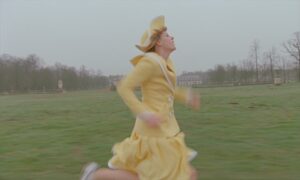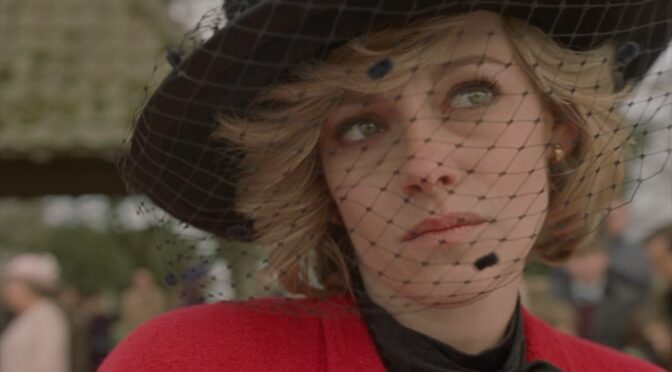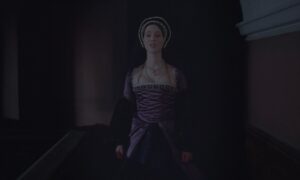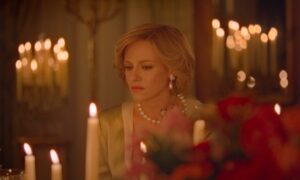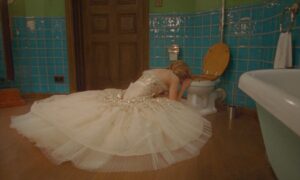I try my best to be a purist when it comes to reviewing films and when it comes to choosing the worthy group to make my annual top twenty list. By that I mean, I tend to avoid choosing a film just to be novel or omitting a film just because it’s already been listed by a plethora of other critics. My list is meant to commemorate (for my own forgetful future self as much as anyone) what most impacted me that year and I like it to stand as a reliable barometer of that first and foremost. To be frank, I don’t go out of my way looking for controversy in my choices. I often find myself in line with much of the critical consensus and I’m perfectly okay being in that line as long as it reflects my honest impressions about the film year. That said, left field picks and passion picks do end up on my lists semi-occasionally and I won’t deny that I feel a little swell of pride when they do. It’s nice to stand up for films that deserve more love. Critic or not, having personal choices you can fight for is one of the great joys of being a movie lover. In the case of Pablo Larrain’s Princess Diana film Spencer, I may need to walk the word “personal pick” back a bit, for it’s not as if I’m by myself in adoring it. There is a nice, reasonably sized group of us up here on this weird little Kubrickian hilltop. Spencer was by and large a well-reviewed film, even taking home the lion’s share of Best Actress critics prizes for Kristen Stewart. But, despite some good ink, Spencer has still felt like the most unfairly picked on great movie of 2021. General audiences seemed to absolutely loathe it (the same ones that presumably cheered on a dysfunctional carbon copy biopic like Bohemian Rhapsody to earth-shattering box office) and, even among the critical community, it felt just a wee bit polarizing. I am incensed on Spencer‘s behalf that it is not unanimously beloved, but this does give me the thrilling opportunity to defend its honor; to leap onto my white steed and mount a spirited defense on behalf of Pablo Larrain’s inventive, cerebral, and emotional fable (as an opening title informs us) about the late Princess of Wales’ uncomfortable tour of duty as an in-law of England’s Royal Family. It’s a joy to be able to champion its many virtues because a second viewing of Spencer only made it more clear what a special, singular and even playful ode it is to Diana Spencer and what her trials as both a Royal and as arguable the world’s most public figure have to say about modern celebrity worship and how a media-infused society treats the women it purports to idolize.
Being a Pablo Larrain film, Spencer is a vivid rumination on the full gamut of what it means to be a politician, celebrity, or often both. It is what it means to be someone with a place reserved in our history books. The one thing the film is not, to the dismay of many a viewer, is a straightforward, completely factual biopic. While it takes inspiration from a specific Christmas holiday Diana and her sons (William and Harry, who you may have also heard of) spent with the Royal Family, the word “fable” clues us in from the start that Larrain has something more surreal in store. It is what I would call an impressionistic rendering of its subject. Cinematographer Claire Mahon shoots Sandringham House and the surrounding verdant countryside like it’s all trapped inside a haunted Faberge egg. And the sense of regal pomp and circumstance inside these airy spaces add a sense of something eerie and spectral to this winter palace. We start the film with not a soul in sight. Then a cavalcade of armored trucks roll past a dead pheasant on a lonely private road. Nameless soldiers exit the lorries and march into the palatial estate with wooden crates that look like they might contain rifles. But, instead of containing weaponry, we see that they are filled with meats, produce and cheeses for the three days of terribly tasteful Christmas festivities. Then a large company of chefs march in to the darkened kitchens, entering the palace as the soldiers retreat from it. And only after all that ceremony do we finally glimpse our titular princess, driving in her convertible and seen from behind. Her festive plaid sweater feels like the first genuinely warm splash of color after those bracingly chilly opening moments. She has gotten herself lost, almost certainly on purpose, on the way to her antiseptically majestic lodgings. The first time we see the face of Diana Spencer (a spellbinding Kristen Stewart, using all her talents as both an A-list and an endlessly undersung character actor) is in a rural roadside cafe asking directions from a gaggle of working class folk who are all stunned speechless to see her. Once all the royals have arrived at the palatial grounds, we learn why Diana was keen to take her time getting there. She is scrutinized for having the gall to be the subject of tabloid fixation. A taciturn lurker of an ex-soldier (Timothy Spall, terrific as a man so quiet and intensely off-putting that he almost comes off as comical) has been retained by the Queen to both keep an eye on Diana and watch out for anyone who might want to spy on her. A centuries-old tradition calls for guests to weigh themselves on arrival and departure, nominally in the name of fun. And, while she knows her distant husband Prince Charles is having an affair (he presents her with the same pearl necklace he gave to his mistress and Diana is expected to wear them to the Christmas Eve supper), all the gossip about attention-seeking behavior and impropriety swirls about her. Even sequestered away with the people who despise her for attracting flash bulbs, she is still the one who is gawked at. The atmosphere is claustrophobic and disorienting, though her beloved sons are there to lighten the mood and provide her with listening ears and real love. But, sadly for Diana, most of the ears at Sandringham are the ones she feels leaning in to catch the next unorthodox thing she says. And, if it were all not enough to make Christmas tense, she starts imagining that the ghost of Anne Boleyn (another disrespected and martyred British royal) is walking the grounds and speaking to her.
Now, while the average viewer just eager to watch a little bit of down–the-middle lifestyle porn was probably already feeling uncomfortable with the constrictive, frigid Kubrickian atmosphere of Spencer, I have to believe the moment Larrain turned it into an actual ghost story is the moment that basic audience mentally (and in some cases physically) hurried for the exits. In losing a certain kind of general audience, Spencer freed itself up (just as Princess Diana eventually broke free from stifling royal customs) to be a much more rewarding film. For my part, I love how Pablo Larrain makes history feel a little haunted. Films like Spencer and his superb Jackie burrow deep into the recesses of their heroines’ psyches and delve into the subjective experience of being a public figure. And, far from being some arbitrary flourish, what the Anne Boleyn ghost connection drives home is that, for a certain kind of famous woman, being placed in a high position can actually be a terrifying and powerless thing. Even the Queen herself breaks her stony composure for a few almost gentle moments to remind Diana that they all exist as fodder for the public’s consumption. each of them typecast into whatever civic image can best serve the people’s expectations of them. “The only picture that really matters is the one of you they put on the ten-pound note,” Her Royal Majesty confides to her estranged, press-hounded daughter-in-law. “When they take that one you understand that all you are, my dear, is currency.” Poor, doomed women like Anne Boleyn were used and abused by their powerful husbands, disposed of and mistreated, and then fed the popular imagination for centuries afterwards. But what of their inner lives, and what of the stories they would have wanted told? Diana spent her adult years trapped in royal finery and boxed in by photographers, but the one happy thing we know of her story is that, before her death, she was able to free herself from her handlers. Before her road ended in that Paris tunnel, she was able to experience real love and a life of her choosing for a short while. And so, criticizing Spencer for not being a standard issue prestige film about the finer points of life as a Royal feels cruelly ironic to me. The film seems to argue that Diana Spencer fought to leave that lonely place. She took great, courageous pains to thwart convention and escape that repressive and sterile way of life, and in doing so she authored her own story as something more than just popular currency. She earned the right to have her story be more than just some coffee table book of behind-the-scenes palace intrigue. However one may feel about Spencer‘s wildest liberties and flights of fancy, from ghost Queens to pearl-eating to Polanski-evoking fever dream outbursts, this subjective, impressionistic take sure feels more like the story Diana deserves.
This also is a major reason that Kristen Stewart is such a perfect choice for the role, before we even touch the perfect blend of enigmatic exteriority and outspoken grace she brings to the banquet table. Stewart comes to this role with a metatextual understanding about what it means to be an object for the popular culture; a precious stone to be handled, praised, ogled, valued and devalued. She has all those years of being under her own kind of microscope, from child star to rising indie actor to disrespected Twilight ingenue to vilified other woman to brilliant character actor finally penning her own cinematic legacy. Stewart became the first American to win the Cesar (France’s answer to the Oscar) some years back for her revelatory work in Olivier Assayas’ The Clouds of Sils Maria. The big American awards body shunned her from even getting a nomination, as they did for her similarly great Assayas follow-up Personal Shopper. American audiences have placed Kristen Stewart on some of the highest pedestals and just as often pelted her with rotten fruit while she was up there. She surely knows something of not just the trappings of fame, but the powerlessness and disrespect that can come with it. She secured her first-ever Academy Awards nomination not two months ago for Spencer, and it certainly seemed like she had to fight tooth and nail to even have the Oscars notice that. None of Spencer‘s other great performers (Timothy Spall, Sally Hawkins’ lovely work as her dresser and childhood friend), its splendid crafts (Claire Mahon’s icy kaleidoscope camerawork; Jonny Greenwood’s majestically ghostly score; Jacqueline Durran’s elegantly arresting costumes), or Pablo Larrain’s beautifully controlled direction were considered worthy. Stewart is perfect for the part because Spencer is a film all about what it feels like to be somehow both idolized and demeaned at the same time. To have the eyes of the masses utterly consume you for pleasure and then insult you afterwards. And she brings to the role both psychological realism and a haute couture model’s sense of the persona Diana projected. She has a dancer’s knack for rendering grand, glossy emotions in subtle, physical ways. I think of how difficult it must have been to completely let us into the headspace of this person while also nailing all the iconic exterior pop of the most photographed individual in the world. It demanded an actor with a character actor’s emotional complexity and an Angelina Jolie-level sense of how to captivate the camera one still image at a time. Off the top of my head, I can name maybe three current actors capable of doing both those jobs at the very highest levels. They are Marion Cotillard, Charlize Theron, and the great Kristen Stewart.
Like those performers, Spencer‘s perfection lies in being beautiful and iconic and also upsetting the expectations that come with wearing that heavy icon’s crown. It’s a pet theme for Pablo Larrain too, investigating the double-edged word of image and of historical scrutiny; how the broader society looks at its idols and how those idols respond to the knowledge that society is trying to make sense of them and define them. Jackie argues that Jacqueline Kennedy very shrewdly used the public fascination with her and with the assassination of her husband and spun it to the nation’s advantage by giving them a moving moment of historical pageantry. Spencer‘s Diana is different. She does not want to dance with history, but to dance with herself. She knows she will forever be under the microscope of the popular eye, but she refuses to accept it quietly, much to the ongoing consternation and embarrassment of her controlling, stiff upper lip in-laws. She is thwarted at every turn by the ever-seeing gaze of her new family and the Paparazzi (the former stitch up Diana’s bedroom curtains for fear of the latter) and she is corralled in by the nagging feeling that anything she says or does will be framed as either an acquiescence to the Royals’ arbitrary customs or as further proof that she really is an attention-seeking exhibitionist. And what Diana wanted, the film poses, was to feel something like freedom. I’m not trying to argue that one cannot take Spencer to task for being indulgent, wildly fictionalized, and sometimes even campy (to its great benefit in my opinion). But all of that is what makes Spencer feel like such a liberating, melancholically heartfelt dedication to Diana and to her her legacy as a person who chafed at the societal corsets that tried to hem her in. Larrain’s “fable of a true tragedy” is an ode to Diana as the wild English colt that no paddock could contain. There’s a montage of wordless moments in the last third of Spencer that consist of Diana dancing. Posing. Prancing, Pirouetting and twirling through finely furnished sitting rooms and marbled halls. Puckishly swatting at lacey curtains and merrily thumbing her nose at stately decorum. It is the most indulgent and purely interpretive scene in the film and it is also quite easily one of my favorite cinematic moments of 2021. In all its bratty, fed- up glory, it is the perfect affront to the Royal Family and mainstream audiences alike. Don’t let the ornate vases and velvet cushions fool you. Spencer is a silly, raucous punk song ringing through the prim halls of power and rattling all the tea trays. And it’s okay if it is not entirely to your personal taste. With all due respect, sir or madam, this one is not, strictly speaking, for you. It’s for Diana.
Of course, who really knows what the Princess of Wales would have made of Pablo Larrain’s beautiful, befuddling paradox of a film? I think he’d be the first to admit that it’s not so much an attempt to photorealistically render Diana Spencer. Photographs and tell-all exposes were probably the things she was most sick of, outside of her coldly philandering husband. If anything, the film is a rebuke to the idea that anyone could knows Diana better than Diana herself. For all the voyeurism she endured, her thoughts were her own, and yet history still needs to have its say on the matter. It always does. And so, in addition to being a raucous salute to Diana’s flight from rigid customs and a loveless family situation, Pablo Larrain is also using Spencer to punk history itself. He is critiquing the idea that we can cleanly tell anyone’s story no matter how much time they might spend in the public eye. In a late scene, Diana muses on how many British rulers are memorialized with a single word (William the Conqueror and such) to try to succinctly convey a sense of them. All of a person’s traits and faults and contradictions and personality boiled down into one last pudding for the easy consumption of future generations. The past melted down into one currency. And, as silly as condensing a living human being into a single adjective obviously is, I’ll play along for a moment. If Diana is to be commemorated with a word, what is it? Based on Larrain’s fault, I propose Diana the Defiant. Diana who would not be hemmed in by a pearl necklace or by a miserable marriage. Diana who, when the time came for them to compose her portrait, would not sit still. In her honor, Pablo Larrain has created one characteristically uninhibited work of art to hang in History’s stuffy sitting room. A spirited feminist whoop, from its ghostly freakouts to its flippantly discordant pop song ending. In a hall of solemn biopic busts, it’s a treat to have one with color in its cheeks and a self-winking sneer in its lip.